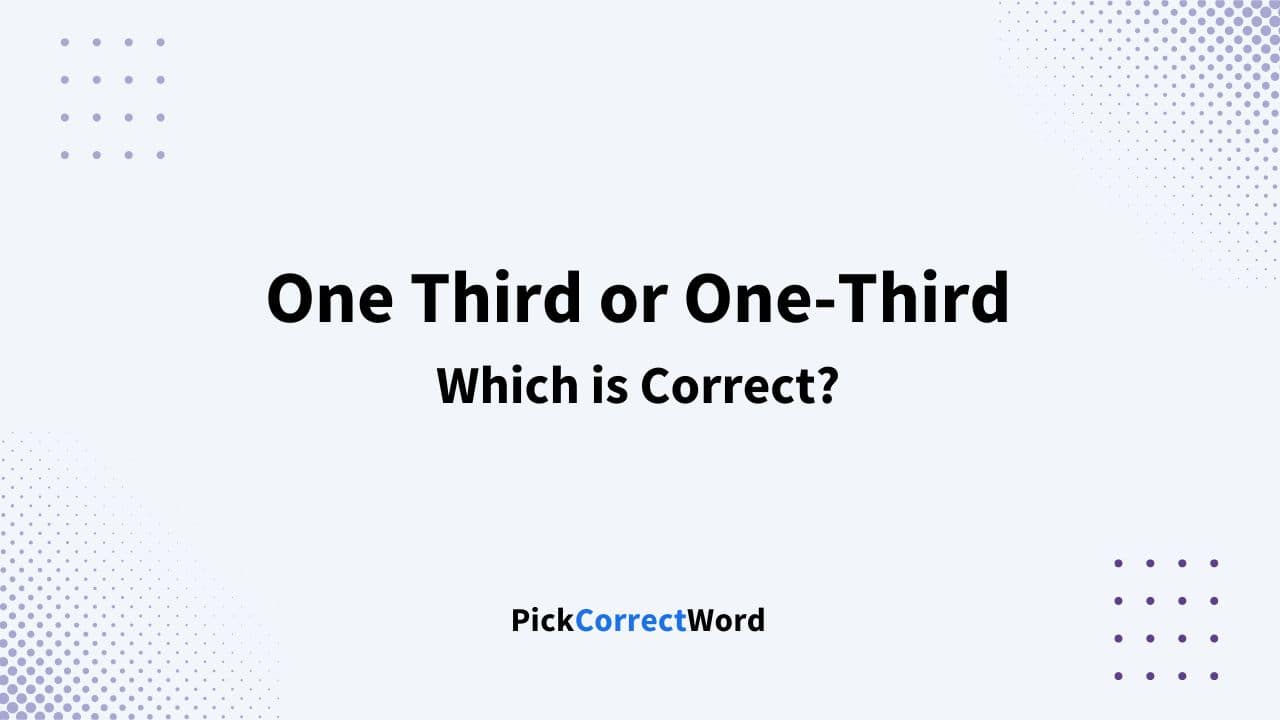The term “one-third” stands for a fraction that means one out of three equal parts. But how should you write it – one third or one-third?
If you’re just talking about the fraction as part of something whole, you write it as one third.
But if you’re using it to describe a noun, like in “a one-third share,” then including a hyphen can help make your meaning clear.
While both ways of writing it can be correct, using a hyphen in some situations makes sure your reader gets exactly what you’re saying without having to pause to figure it out.
One Third or One-Third? Which is Correct?
The right way to use “one third” or “one-third” depends on the situation. You can write one third without a hyphen when you’re using it as a thing or idea.
- For example, you can say: “He drank one third of the water bottle.”
But, when you’re using it as a describing word before a thing or idea, you should always connect it with a hyphen.
- For example: “She received a one-third share of the inheritance.”
Here’s a quick rule of thumb:
- Hyphenate when preceding a noun: one-third slice.
- No hyphen when standing alone or following a noun: I ate one third.
One Third: When To Use?
You can write “one third” without a hyphen when it’s acting as a noun phrase in a sentence.
This usually happens when “one third” is the subject or object of a verb or preposition. In these situations, it’s not directly describing a noun, so there’s no need for a hyphen.
For example:
- In the sentence “One third of the cake was left,” “one third” is the subject of the verb “was.”
- In “I’ll take one third, please,” “one third” is the object of the verb “take.”
Therefore in both these cases you do not need to use the hyphen.
One-Third: When To Use?
You should write “one-third” with a hyphen when the fraction is being used as an adjective to directly describe a noun. The hyphen in “one-third” indicates that the two words together are describing another word to convey a single concept.
Here are two examples where “one-third” is used with a hyphen:
- “She finished a one-third part of the project.”
- “To pass the bill, a one-third majority is needed.”
In these cases, “one-third” describes the nouns “part” and “majority,” and the hyphen helps make it clear that “one-third” is a single descriptive term made up of two words.
Without the hyphen in “a one-third share,” it could be wrongly read as “one third-share” or “one share that is a third,” which would be confusing.
Guidelines from sources like The Blue Book of Grammar and Punctuation and Scribbr back up this use, saying that fractions should be hyphenated when they’re used as compound adjectives before nouns.
Examples of Using “One Third“ in A Sentence
“One third of the students in the class are studying for a science degree.“
“He offered to pay one third of the rent to ease the financial burden.“
“One third of the pie has already been eaten.“
“After the vote, it was clear that one third of the committee disagreed with the proposal.“
“She decided to donate one third of her salary to charity.“
Examples of Using “One-Third“ in A Sentence
“She inherited a one-third interest in the family business.“
“The contractor completed a one-third segment of the construction ahead of schedule.“
“The new law was passed with a one-third majority vote in the senate.“
“Each partner contributed a one-third stake in the joint venture.“
“The recipe called for a one-third cup of sugar to be added to the mixture.“


